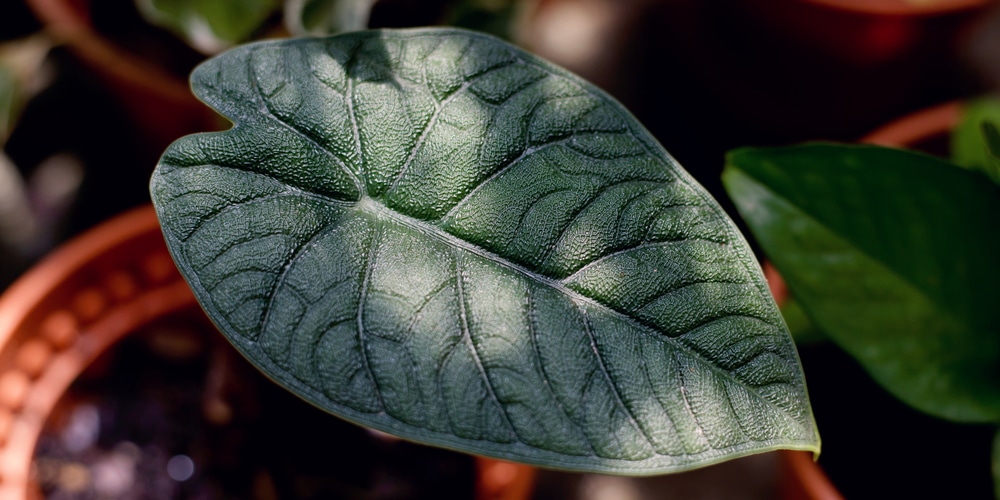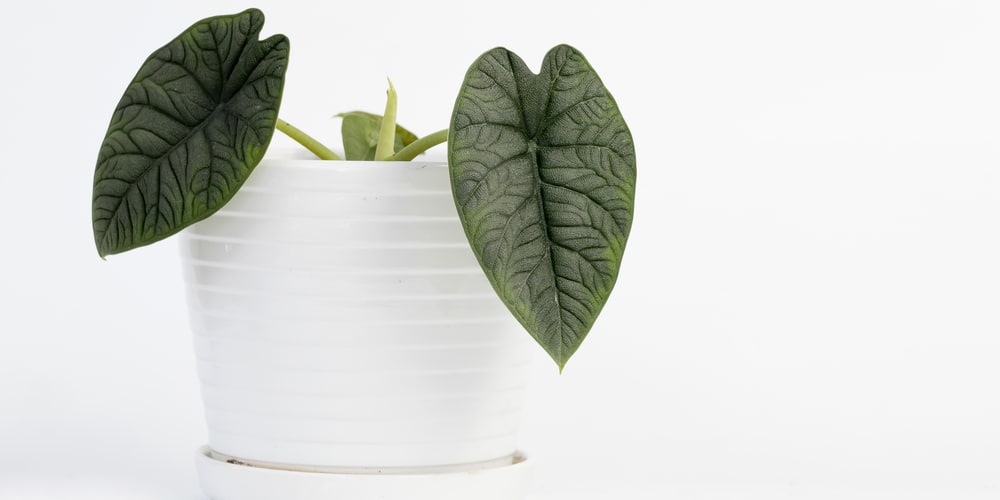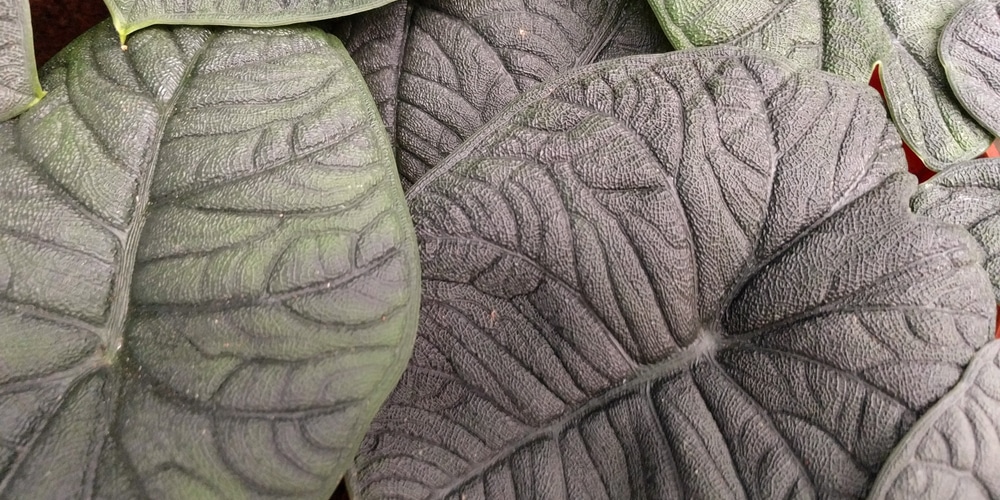The Alocasia Melo is a tropical plant that is native to Borneo and is more commonly called the Alocasia rugosa. This plant also has several nicknames, which it shares with other species of the Alocasia family, including the elephant ear plant and African mask plant.
Alocasia Melo has beautiful jade green leaves, which can appear blueish in certain lights. The leaves are thick and feel like plastic which makes many people think these plants are artificial. Let’s look at the Alocasia Melo, including plant care, propagation, and features.
What is a Alocasia Melo?
Alocasia Melo comes from a genus that has over seventy varieties of perennial plants that flower regularly. These attractive plants are native to many tropical regions, including much of Asia as well as Australia. They have large, broad leaves and reproduce via underground rhizomes. Many Alocasia species are hybrids that have been cultivated to create unique plants that make excellent house plants.
The Alocasia Melo is a relatively small member of the Alocasia family. When mature, the plant will be between one and two feet tall. Like all Alocasias, these plants have large leaves which grow between ten and fifteen inches long and ten inches wide.
Alocasia Melo are terrestrial plants that are fast-growing in the right conditions. They spread by growing in a shrub-like structure and produce a non-fragrant cream-colored flower when conditions are right.
The only downside of the Alocasia Melo is that the plants are highly toxic to both humans and animals. If ingested, a severe allergic reaction can occur, which will show up on the skin and eyes. Other symptoms include problems with the mouth and irritation of the throat. If you have children or pets, they should be kept away from the Alocasia Melo.
How to Care for an Alocasia Melo
Alocasia Melo requires specialist care, as detailed below. These plants become dormant during the winter, which means they require less water from the fall onwards. Don’t worry if your plants stop growing drops some of their leaves during the winter. This is a normal part of the plant’s hibernation process. Your plant will continue to grow as the weather gets warmer.
Water and Fertiliser
Alocasia Melo should be watered in small amounts regularly. Be careful not to overwater your plant as they don’t like to have soggy roots. Overwatering can cause root rot, fungal infections and can result in leaves turning yellowish.
During the growing season, you can water your plant as much as two or three times a week. Wait until the top two inches of the soil feels dry before watering again. The amount of water your plant requires will vary depending on the climate where you live. On cooler days, you can provide less water.
You can also give your plant an NPK fertilizer on a monthly basis throughout the growing season.
Sunlight and Temperature
The Alocasia Melo likes to grow in partial shade but also requires some bright indirect sunlight. However, these plants can’t tell the difference between sunlight and artificial light, so they can be kept in rooms without windows.
These plants have delicate leaves and shouldn’t be left in the scorching sun or in the cold. They grow best at room temperature or between 20 to 30 °C. Alocasia Melo can be grown outside in USDA zones 10 and 11 but should be brought inside when the fall arrives.
Humidity
Like all Alocasia, the Alocasia Melo loves humidity and thrives in a climate with humidity levels of approximately 75%. If the weather is dry, you may like to use a humidifier or spray a mist of water on your plants. Be careful not to overdo misting, as this can make the plant’s leaves wet and cause fungal growth.
Repotting and Pruning
Alocasia Melo plants should be potted in well-drained soil as they don’t like to be waterlogged and need plenty of aeration. You may like to repot your plant using a potting mix that contains peat moss or sandy soil. Also, add some gravel or stones to the bottom of the pot to help with drainage.
Perhaps surprisingly, the roots of the Alocasia Melo like to be root bound. Therefore, it’s best not to change pots or plant the Alocasia Melo in too larger a pot. You don’t need to report your plant unless you notice that the rhizome has outgrown the pot. You can also have a look at the drainage holes, and if you can see roots through them or coming out of the holes, this is a sign it’s time to repot your plant.
Alocasia Melo plants don’t need much pruning, but you can cut off any old or unhealthy leaves. This will help to maintain the plant’s appearance and encourage healthy growth.
Alocasia Melo Propagation
If you want to propagate your Alocasia Melo, it’s best to wait until the spring or summer when the plant is actively growing. You can propagate your plant while repotting, as you’ll need to remove a rhizome to create a new plant.
Carefully take your plant out of its pot and loosen the soil around the rhizome. You can cut off a small piece of rhizome with a knife and then replant both pieces of the plant. Keep the soil in your new plant’s pot moist and sit its pot in a warm, humid place if possible. It will take a couple of months for the new plant to establish itself successfully.
Conclusion
Alocasia Melo is a beautiful plant with large, textured leaves. Young plants are an attractive jade color, and they mature into a slate blue with dark veins.
It requires well-drained soil and should be placed in indirect sunlight. These plants thrive in areas with high humidity and should be watered regularly. Wait until the soil dries out before watering, and be careful not to overwater as this could cause root rot or fungal infections.
If you have pets or children, you should be careful that they don’t digest this toxic plant. Always seek medical or veterinary attention if any of the plant’s leaves have been ingested.
If you are looking for a houseplant that will do well in low light conditions, check out our article on plants for an office with no windows. All of the plants listed are great for any house.


